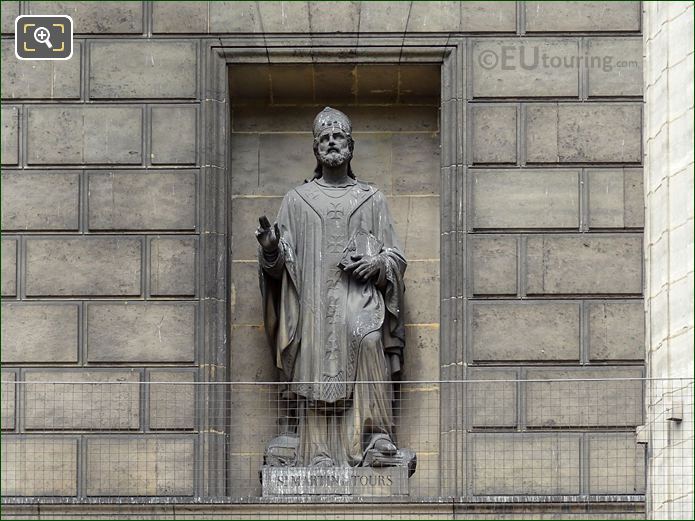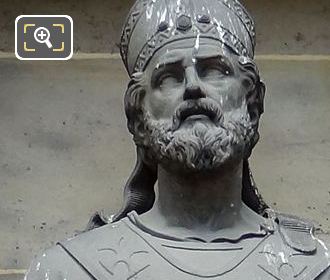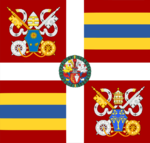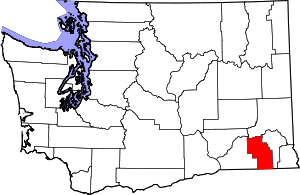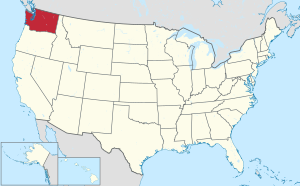|
Reply |
Message 1 of 7 on the subject |
|
HD photographs of Saint Martin of Tours statue on Eglise de la Madeleine in Paris - Page 1013
While we were at the Eglise de la Madeleine in the 8th Arrondissement of Paris, we took these high definition photos showing a statue depicting Saint Martin of Tours, which was sculpted by Francois Alfred Grevenich.
Paris Statues
- << Previous 1011 1012 1013 1014 1015 1016 1017 1018 1019 1020 Next >>
Positioned on the facades of the Madeleine Church you will see statues of saints, and in this first HD photo you can see the stone statue depicting Saint Martin of Tours, who became a Bishop of Tours, and one of the most recognised Christian Saints, he is considered as a spiritual bridge across Europe due to the fact that he was born in Hungary, grew up in Italy and spent adult life in France.
Here is a close up showing the top part of the Saint Martin statue, which was sculpted by Francois Alfred Grevenich who according to some sources was born in Paris in 1802, whereas others state 1808, yet passing away in 1847, he had a very short career, but Francois Alfred Grevenich did gain two medals for his works presented at Salons in 1831 and 1837.
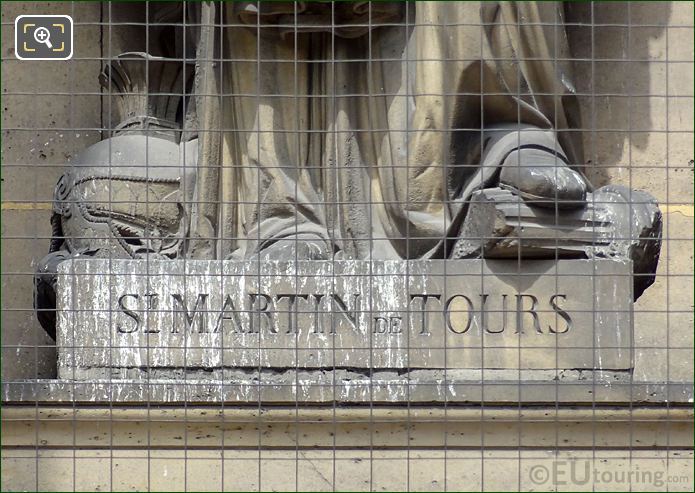 Saint Martin of Tours was originally a soldier and legend has it that when Saint Martin was travelling he came across a poor beggar and being very cold he took his military sword and tore his cloak in half, giving half to the poor man, so hence he became the Patron Saint of the Poor as well as Soldiers.
Part of his reliquary was the cloak of Saint Martin that a priest known as a Cappellanu took great care of, and a priest in the army was referred to as a Capellani, which in French translates to Chaelains, and is where the English word Chaplain is derived from, and Saint Martin is recognised in numerous European countries, especially in Roman Catholic religion, with his feast day being 11th November.
However, here you can see the location of the Saint Martin of Tours statue located within a niche on the portico facade of the Eglise de la Madeleine, which can be seen through the famous Corinthian columns of the church from the square called the Place de la Madeleine.
https://www.eutouring.com/images_paris_statues_1013.html
|
|
|
 First
First
 Previous
2 to 7 of 7
Next
Previous
2 to 7 of 7
Next
 Last
Last

|
|
Reply |
Message 2 of 7 on the subject |
|
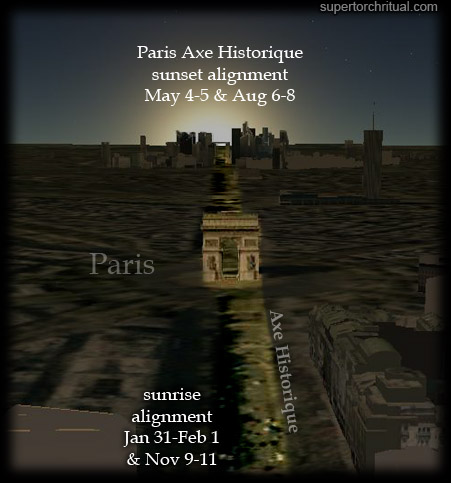

France’s Macron and Pope Francis hold unusually long meeting
Updated 26 June 2018
REUTERS
June 26, 201812:24
1277
- Macron and Pope Francis spoke for nearly an hour in the Vatican’s Apostolic Palace
- The two discussed “protection of the environment, migration, and commitment to conflict prevention and resolution"
VATICAN CITY: French President Emmanuel Macron, accused at home of straining France’s secular foundations by seeking to mend ties with the Catholic Church, had an unusually long and cordial meeting with Pope Francis on Tuesday.
They spoke for nearly an hour in the official papal library in the Vatican’s Apostolic Palace, about twice as long as Francis usually spends with heads of state or government.
A Vatican statement said the two discussed “protection of the environment, migration, and multilateral commitment to conflict prevention and resolution, especially in relation to disarmament.”
They also spoke about prospects for resolving conflicts in the Middle East and Africa and the future of Europe, it said.
At the end of the private part of the audience, Macron gave Francis a rare copy of Goerges Bernanos 1936 book “Diary of a Country Priest.”
“I’ve read this book many times and it has done me good. It is a book that I have always loved very much,” the pope told Macron, 40, who was accompanied in the public parts of the meeting by his wife Brigitte, 65.
Francis gave Macron a medallion depicting Martin of Tours, a 4th century saint who is depicted cutting his cloak in half to give it to a beggar in winter.
“This means the vocation of those who govern is to help the poor. We are all poor,” Francis told Macron as he was giving him the medallion.
As Macron left the library, he and Francis exchanged a two-cheek kiss, another very usually gesture between a pope and a visiting head of state.
The Vatican was expected to issue a statement later on the themes discussed during the private talks.
Two months ago, Macron called for stronger ties between the state and the Catholic Church, a move critics said blurred a line that has kept French government free of religious intervention for generations.
The issue is particularly sensitive in historically Catholic France, where matters of faith and state were separated by law in 1905 and which is now home to Europe’s largest Muslim and Jewish communities.
France’s guiding principles also hold that religious observance is a private matter, for all faiths.
Macron was raised in a non-religious family and was baptized a Roman Catholic at his own request when he was 12.
On Tuesday afternoon Macron was due to be installed as the “First and Only Honorary Canon” of the Rome Basilica of St. John’s in Lateran, which is the pope’s cathedral in his capacity as bishop of Rome.
Under a tradition that began in the 15th century when France was a monarchy, French leaders are automatically given the title.
https://www.arabnews.com/node/1328511/world
|
|
|
|
Reply |
Message 3 of 7 on the subject |
|
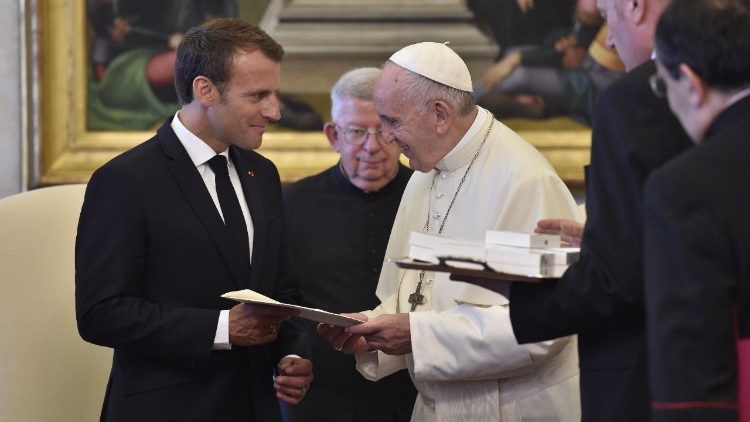 Pope exchanges gifts with French President Macron Pope exchanges gifts with French President Macron
Pope Francis meets French President Macron
At a private audience in the Vatican’s Apostolic Palace on Tuesday, Pope Francis and France’s president, Emmanuel Macron, exchange gifts and discuss the environment, migration, and disarmament.
By Devin Watkins
Pope Francis met on Tuesday with French President Emmanuel Macron, who later inherited the title of honorary canon of the Lateran Basilica. Macron was accompanied at the papal audience by his wife, Brigitte.
The Pope and the French president discussed protection of the environment, migration, and conflict prevention, according to a communique from the Holy See Press Office.
Their comments on global issues included the need for “multilateral commitment to conflict prevention and resolution, especially in relation to disarmament.”
Each one shared their views on conflicts in the Middle East and Africa, and reflected on the “prospects of the European project.”
Pope Francis and President Macron talked about how religions contribute to “the common good” of France, especially the Catholic Church’s commitment to bettering society.
Exchange of gifts
The two men exchanged gifts, with Pope Francis giving Macron, who was baptized a Catholic at the age of 12, a medallion of St. Martin of Tours, depicted cutting his cloak in half to give it to a beggar in winter.
President Macron gave the Pope a rare copy of Georges Bernanos’ 1936 book “Diary of a Country Priest”.
Afterwards, President Macron met with Cardinal Secretary of State Pietro Parolin and Archbishop Paul Richard Gallagher, Secretary for Relations with States.
Honorary Canon of Lateran Basilica
Later in the afternoon, Emmanuel Macron received the title “First and Only Honorary Canon” of the Basilica of St. John Lateran, the Cathedral of Rome.
French leaders automatically inherit the title of “Honorary Canon” under a tradition that dates back to the 15th century when France was a monarchy. Cardinal-elect Angelo De Donatis presided over the ceremony and conferred the title on President Macron.
https://www.vaticannews.va/en/pope/news/2018-06/pope-francis-france-president-macron-audience.html |
|
|
|
Reply |
Message 4 of 7 on the subject |
|
https://www.lanacion.com.ar/lifestyle/quien-fue-san-martin-de-tours-el-patrono-de-la-ciudad-de-buenos-aires-nid11112023/ |
|
|
|
Reply |
Message 5 of 7 on the subject |
|
Plaza San Martín de Tours (Buenos Aires)
 Vista de la barranca de la plaza de San Martín de Tours, tomada desde la calle Posadas entre Adolfo Bioy Casares (ex Schiaffino) y la bajada de la avenida Alvear  Extremo sur de la plaza, en la intersección de la avenida Alvear y la calle Adolfo Bioy Casares
La plaza de San Martín de Tours es un espacio verde ubicado en el barrio de Recoleta de la ciudad de Buenos Aires, Argentina. Forma parte de un amplio conjunto de plazas que conforma el tradicional Paseo de la Recoleta. Se encuentra delimitada por las calles de Eduardo Adolfo de Bioy Casares (ex Schiaffino), Posadas y la avenida Alvear,1 que en su desembocadura a la avenida del Libertador bordea los márgenes sur y oeste de la plaza. Frente a su margen norte, cruzando la calle Posadas, se ubican el monumento ecuestre a Carlos María de Alvear y el edificio del Palais de Glace. Recibió el nombre en 1962 en homenaje a San Martín de Tours, patrono de Buenos Aires, por decreto del entonces intendente Alberto Prebisch.2
 Monumento a San Martín de Tours  El monumento a Alvear en la década de 1930. A la derecha se aprecia la parte inferior de la plaza
La fisonomía de la plaza está marcada por una ladera que desciende hacia la calle Posadas, parte de la barranca ribereña histórica del Río de la Plata. En el bajo se ubica un ombú de gran porte, mientras que la zona elevada forma una terraza donde se encuentran plantados varios especímenes de gomero, retoños del ubicado en la cercana plaza de Juan XXIII. Hacia la esquina de la avenida Alvear y la calle Schiaffino se encuentra una monumento en homenaje al ingeniero y periodista Emilio Mitre realizado en mármol de Carrara con basamento de granito, obra del escultor Hernán Cullen Ayerza emplazada allí en 1931.3 También en la porción superior de la plaza se ubica un monumento a San Martín de Tours realizado en bronce, del escultor Ermando Bucci.4
Los terrenos que hoy ocupa la plaza de San Martín de Tours formaron históricamente parte de la zona de quintas de la Recoleta, usándose para el cultivo de especies frutales y la cría de animales domésticos. Hasta el último cuarto del siglo xix, antes de que la epidemia de fiebre amarilla de 1871 llevara a la aristocracia porteña a abandonar el Barrio Sur, fue una zona marginal de las afueras de la ciudad. Excavaciones realizadas por un equipo de arqueología urbana encontraron restos de un pozo y materiales que señalan la existencia de viviendas de construcción precaria.5 Con la redistribución sociodemográfica ocurrida tras la epidemia, los alrededores de la plaza se poblaron a fines de siglo de elaborados palacetes en estilo academicista francés. A principios del siglo xx existió en el sector de la plaza cercano a la avenida Alvear el Recreo de Belvedere, café y restaurante donde por primera vez se habría bailado públicamente el tango. En 1909 el terreno fue adquirido por la Municipalidad, que dispuso su parquización.6
La normativa es inconsistente con respecto a la catalogación del espacio verde. Algunos registros legales de la Ciudad Autónoma de Buenos Aires refieren a la plaza de San Martín de Tours mientras que en ocasiones es mencionada como una plazoleta.1
|
|
|
|
Reply |
Message 6 of 7 on the subject |
|
|
|
|
Reply |
Message 7 of 7 on the subject |
|
Columbia County, Washington
From Wikipedia, the free encyclopedia
Columbia County is a county located in the U.S. state of Washington. As of the 2020 census, the population was 3,952,[1] making it the second-least populous county in Washington. The county seat and largest city is Dayton. The county was created out of Walla Walla County on November 11, 1875,[2] and is named after the Columbia River (which does not flow through the county). Columbia County is included in the Walla Walla, WA Metropolitan Statistical Area.
According to the United States Census Bureau, the county has a total area of 873 square miles (2,260 km2), of which 869 square miles (2,250 km2) is land and 4.9 square miles (13 km2) (0.6%) is water.[3] It is part of the Palouse, a wide and rolling prairie-like region of the middle Columbia basin.
Geographic features
[edit]
National protected area
[edit]
Historical population
| Census | Pop. | Note | %± |
| 1880 |
7,103 |
|
— |
| 1890 |
6,709 |
|
−5.5% |
| 1900 |
7,128 |
|
6.2% |
| 1910 |
7,042 |
|
−1.2% |
| 1920 |
6,093 |
|
−13.5% |
| 1930 |
5,325 |
|
−12.6% |
| 1940 |
5,549 |
|
4.2% |
| 1950 |
4,860 |
|
−12.4% |
| 1960 |
4,569 |
|
−6.0% |
| 1970 |
4,439 |
|
−2.8% |
| 1980 |
4,057 |
|
−8.6% |
| 1990 |
4,027 |
|
−0.7% |
| 2000 |
4,064 |
|
0.9% |
| 2010 |
4,078 |
|
0.3% |
| 2020 |
3,952 |
|
−3.1% |
| 2023 (est.) |
4,053 |
[4] |
2.6% |
As of the 2010 census, there were 4,078 people, 1,762 households, and 1,156 families living in the county.[9] The population density was 4.7 inhabitants per square mile (1.8/km2). There were 2,136 housing units at an average density of 2.5 units per square mile (0.97 units/km2).[10] The racial makeup of the county was 93.0% white, 1.4% American Indian, 0.6% Asian, 0.3% Pacific islander, 0.3% black or African American, 1.7% from other races, and 2.7% from two or more races. Those of Hispanic or Latino origin made up 6.2% of the population.[9] In terms of ancestry, 24.7% were German, 18.3% were English, 12.3% were Irish, and 7.0% were American.[11]
Of the 1,762 households, 24.7% had children under the age of 18 living with them, 52.6% were married couples living together, 9.2% had a female householder with no husband present, 34.4% were non-families, and 29.3% of all households were made up of individuals. The average household size was 2.27 and the average family size was 2.76. The median age was 48.3 years.[9]
The median income for a household in the county was $43,611 and the median income for a family was $53,452. Males had a median income of $45,000 versus $35,357 for females. The per capita income for the county was $25,810. About 9.8% of families and 16.4% of the population were below the poverty line, including 19.7% of those under age 18 and 10.9% of those age 65 or over.[12]
As of the 2000 census, there were 4,064 people, 1,687 households, and 1,138 families living in the county. The population density was 5 people per square mile (1.9 people/km2). There were 2,018 housing units at an average density of 2 units per square mile (0.77 units/km2). The racial makeup of the county was 93.73% White, 0.22% Black or African American, 0.96% Native American, 0.42% Asian, 0.05% Pacific Islander, 2.73% from other races, and 1.89% from two or more races. 6.35% of the population were Hispanic or Latino of any race. 19.6% were of German, 18.2% United States or American, 14.3% English and 8.3% Irish ancestry. 94.3% spoke English and 5.7% Spanish at home.
There were 1,687 households, out of which 27.70% had children under the age of 18 living with them, 56.00% were married couples living together, 8.50% had a female householder with no husband present, and 32.50% were non-families. 29.00% of all households were made up of individuals, and 13.00% had someone living alone who was 65 years of age or older. The average household size was 2.36 and the average family size was 2.89.
In the county, the population was spread out, with 23.90% under the age of 18, 7.00% from 18 to 24, 22.80% from 25 to 44, 27.70% from 45 to 64, and 18.50% who were 65 years of age or older. The median age was 42 years. For every 100 females there were 95.20 males. For every 100 females age 18 and over, there were 94.80 males.
The median income for a household in the county was $33,500, and the median income for a family was $44,038. Males had a median income of $33,690 versus $21,367 for females. The per capita income for the county was $17,374. About 8.60% of families and 12.60% of the population were below the poverty line, including 15.90% of those under age 18 and 11.10% of those age 65 or over.
|
|
|
 First
First
 Previous
2 a 7 de 7
Next
Previous
2 a 7 de 7
Next
 Last
Last

|



